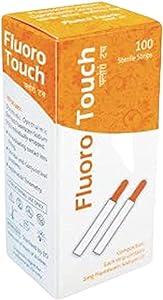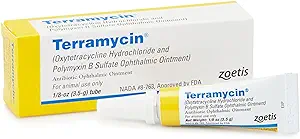How do you recognize a corneal ulcer in a cat?
The cornea is the outer layer of the eyeball. It is the transparent layer that covers your pupil and iris. When a corneal ulcer in a cat has occurred, that layer has been damaged. Due to the damage to the cells of the cornea, certain substances are released into the space between the cells of the cornea. These substances attract moisture and cause blood vessels to grow into the cornea to allow it to heal. You can recognize the accumulation of fluid and blood in the cornea as a white spot with sometimes a bit of a red glow. We also call this a corneal ulcer in the cat.
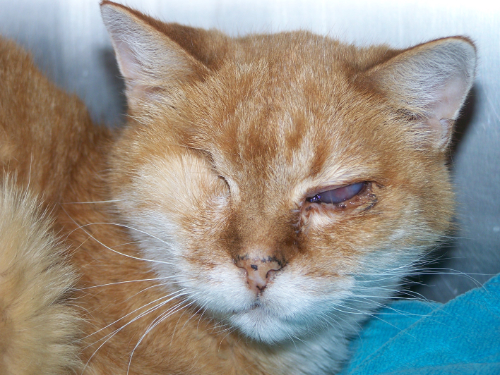
Difference between cataracts and a corneal damage
When you see a white or blue spot on your cat’s eye, it is important to examine the eye carefully. Look carefully to see if the blur is just in the pupil or if it’s on the outer layer of the eye. The pupil is the black part in the center of the eye. If it is on the outer layer of the eyeball, then there is a corneal ulcer in your cat.
Cataract
If there is cataract (the white / gray haze is then only in the pupil)in the eye, then this is not painful for a cat. That is why he usually does not close his eye in case of cataract. Usually this is also going on in two eyes and corneal damage is usually only in one eye. In addition, cataracts in cats are not very common, unlike corneal damage.
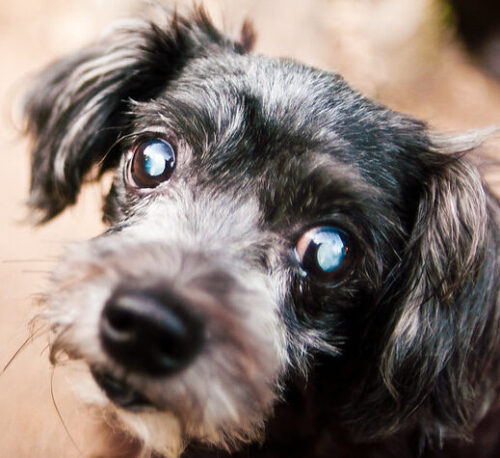
a CORNEAl ulcer IN A CAT
The cornea is the outer layer of the eyeball. It is the transparent layer that covers the iris and pupil. If a spot is visible on this layer, there is damage to the cornea. This can be as small as a pinhead, but sometimes cover almost the entire eye. This depends on how extensive the damage to the eye is. The damage itself is usually barely visible, but due to swelling of the cornea as a result of the damage, the cornea takes on a white, almost blue color. If it exists a little longer, blood vessels can grow in and then a bit of a pink / red color can become visible. A corneal injury in a cat is usually also painful. In that case, your cat will close one eye.
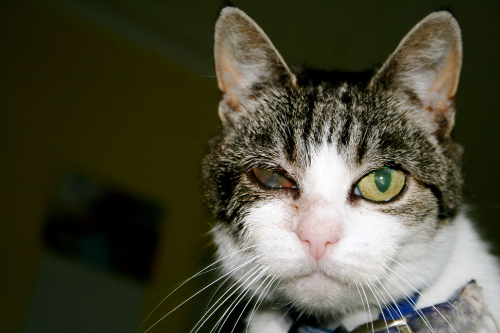
To the vet with a corneal ulcer in a cat
“Is a corneal ulcer in a cat bad?” you may wonder. This can indeed be very serious in some cases. The eye can be severely damaged and there might be a chance that it needs to be surgically removed if ignored. If you think there is damage to the cornea, it is best to go to a vet. The vet will then put an orange dye in your cat’s eye. This orange dye turns bright green when it gets into your cat’s eye. The dye only adheres to the middle layer of the cornea. Damage to the cornea causes a green spot to appear on the eye that cannot be rubbed away.
A corneal ulcer drawn out to understand the problem
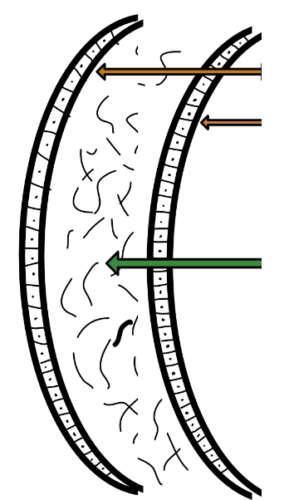
The outer and inner layers of the cornea are very closely packed cells. The orange arrows point to these layers. The middle layer (green arrow) is a bit messy with lots of fibers. The green dye that the vet uses to determine whether there is corneal damage in a cat attaches to these fibers. If the outer cell layer is not damaged, the green dye cannot adhere to the eye and simply washes away. There is nothing to see in the eye.
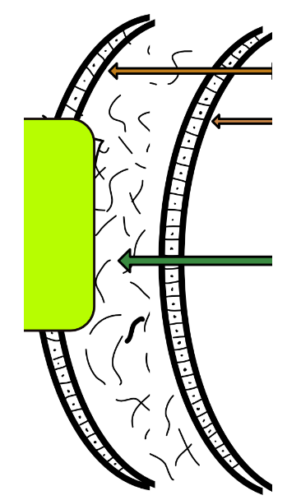
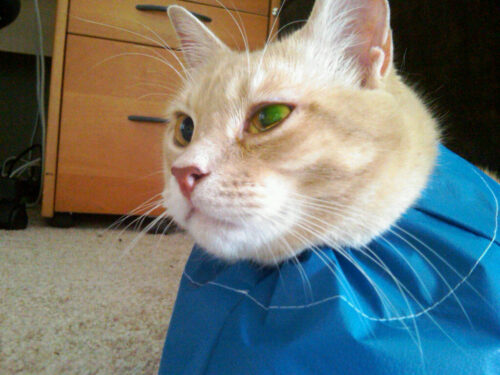
Treatment of a corneal ulcer in a cat
START OF TREATMENT
If the conclusion is that a corneal ulcer is present in a cat, care must be taken to allow this to heal. The eye can usually do this very well itself. However, a bacteria will often grow in it if it is not treated. That is why we as a vet prescribe an antibiotic ointment and let the owner give this ointment until the eye has healed again. The ointment does not repair corneal damage in a cat, but it ensures that an infection stays away. The tricky thing is that it can sometimes take a month or more to heal. And that an owner must therefore repeatedly go to the vet to have that dye administered again to see if it has already healed. Ointments should not be stopped until the eye has completely healed.
CONTROL OF THE RECOVERY
It is best to have this check of corneal damage in a cat carried out by your veterinarian. He also notices when things are getting worse and knows which signals to watch out for. However, this can be quite pricey, these checks. In that case, you can also order the fluorescein test strips yourself and monitor the recovery yourself.
You can moisten the orange part of the strip with a small drop of tap water. You then drop the resulting orange drop of the strip into the affected eye. You can then look at it with a magnifying glass and a light and see if you see a piece of green somewhere in the eye. Do this with bright light. If you see this, you can rub an eyelid over it to see if it is not a peace of dirt in the eye. If the green remains, then unfortunately the corneal damage in a cat has still not healed and you have to continue with the ointments. You can do this test once every week to monitor recovery.
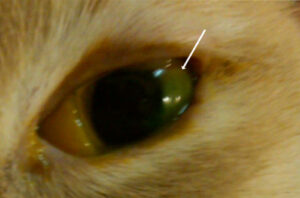
Alternative to the eye ointment
Your vet’s antibiotic ointment is the best ointment you can give. But usually you don’t get it without a check-up consultation. The ointment on its own costs about €5.00. But add the consultation and then it suddenly becomes quite expensive. Again, it’s the best! If you really don’t have the money, you can buy the eye drops below to give to your cat. The corneal damage can then recover. You give the drops 2 times a day until your cat’s corneal damage has healed.
Recovery from a corneal ulcer
NORMAL COURSE OF HEALING
In most cases, corneal damage in a cat recovers normally. Usually it takes about three or four weeks and then the problem is solved. There may be a scar that limits vision slightly, but in reality we don’t really notice that a cat has limited vision due to that scar. Your cat will no longer be in pain and it will no longer deteriorate.
DIFFERENT COURSE OF THE HEALING
But sometimes corneal damage in a cat does not heal or does not heal properly. The newly formed outer “neat” cell layer then does not attach properly to the “messy” bottom layer. In that case it is necessary to scratch off the broken layer under anesthesia (not always necessary) and to make a fresh wound on the cornea. Often it is then immediately decided to loosen a layer of mucous membrane from the inside of the eyelids and to attach it over the broken part of the eye. The eyelid can then (temporarily) not open. Subsequently, the blood vessels from that mucosa grow well into the cornea and more nutrients reach the damaged area. This increases the chance of recovery and therefor it increases the chance that the eye needs to be surgically removed.
Later, during a second operation, this piece is detached from the eyelid so that the eye can also be opened again. The eye itself is saved, but a scar remains where the damage was. This scar will reduce the cat’s vision. But he can keep his eye.
Eye amputation due to a corneal ulcer.
When the eye really doesn’t heal anymore and causes a lot of pain, it is usually decided to remove the eye. This sounds very terrible, but in reality we often notice that an animal becomes very cheerful and playful again within a few days. He is finally rid of the months-long nagging pain! He could hardly see with his sore eye anyway, so he was already quite used to seeing with only one eye. But hopefully this will be spared your cat.
Fingers crossed that your cat will just heal on it’s own. Good luck!

